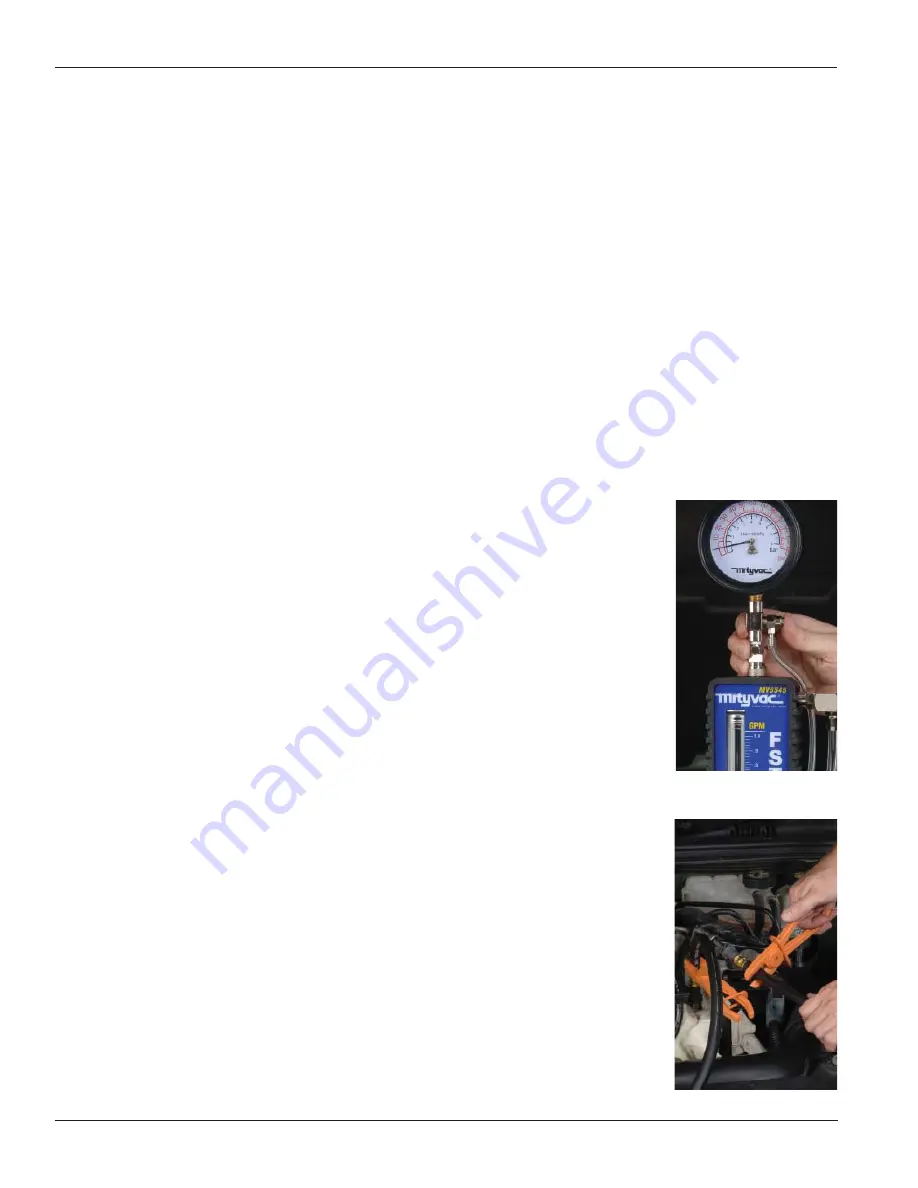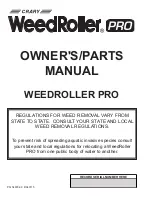
Page Number - 22
Form 824262
Fig. 33
Fig. 34
These indications of a clogged inlet strainer may or may not be
evident during testing. If the results are inconclusive, and the fuel
system has an accessible inline filter, follow the procedure above to rule out a clogged filter. If it is
determined that the inline filter is not
the problem, replace the strainer or the pump module, and retest.
Fuel Pump/Electronic Control Failure
If testing with the FST indicates the engine is not receiving the proper fuel pressure and volume,
and a clogged inline filter or fuel line are determined not to be the cause, then a failure of the elec-
tronic control system or the fuel pump is the most likely cause. Follow the vehicle manufacturer’s
recommended procedure for troubleshooting these components to determine the malfunction.
Once repairs are complete, retest the system for proper fuel delivery system performance.
Fuel Visualization
Visualizing the fuel as it passes through the flowmeter can provide hints of fuel system problems or
fuel contamination. A rapid drop in pressure possibly caused by a clogged inlet strainer can cause
the fuel to boil, even at normal temperatures. Air released by the fuel forms bubbles that are visible
as they pass through the flowmeter.
Air bubbles can also be caused by a bad swirl pot or leaking fuel pickup line in the tank, which allow
air to be sucked into the fuel pump. Performing flow demand tests can sometimes cause air to form
in the fuel lines, but air bubbles should never be present once the FST is connected, air is bled off,
and fuel is flowing normally to the engine.
Fuel contaminated with water may appear discolored or cloudy.
Rust or scale will typically be filtered out before reaching the tester, but additives can cause discol-
oration. Don’t be fooled by fuel that
appears normal. Many chemical impurities are not visible, but can cause the engine to run poorly.
Pressure Leakdown Test
To facilitate hot starts, modern fuel delivery systems should maintain some pressure for several
hours after the engine is turned off. Once the fuel pump is no longer operating, the pressure is
trapped in the fuel system by a check valve in the fuel pump, and closing of the pressure regulator
and fuel injectors.
With the FST connected inline, before the fuel rail, turn off the engine and watch the pressure
gauge. If the pressure drops more than .5 bar in 5 minutes, a leak exists somewhere in the system.
Return Fuel Systems
1. Start the engine to build pressure.
2. Turn off the engine and immediately clamp off the FST outlet hose running from the tester to
the fuel rail. This will trap the pressure gauge between the clamp and the fuel pump.
3. If the pressure gauge indicates a leak, check the fuel supply line from the tank to the tester. If
no leaks are evident, replace the fuel pump due to a faulty check valve.
4. Remove the clamp from the fuel line, and restart the engine to build pressure.
5. Turn off the engine and immediately clamp off the FST inlet hose running to the tester from the
fuel supply line. This will trap the pressure gauge between the clamp, the fuel rail, the pressure
regulator, and the fuel return line.
6. If the pressure drops, either the injectors or the pressure regulator is leaking.
7. With the second scissor clamp, pinch off the fuel return line between the pressure regulator and
the fuel tank.
8. If the pressure continues to drop, the cause is a leaking injector(s). If the pressure holds steady,
the cause is a leaking pressure
regulator.
Returnless Fuel Systems
1. Start the engine to build pressure.
2. Turn off the engine and immediately clamp off the FST outlet hose running from the tester to
the fuel rail. This will trap the pressure gauge between the clamp and the fuel pump module.
3. If the pressure gauge indicates a leak, check the fuel supply line from the tank to the tester. If











































